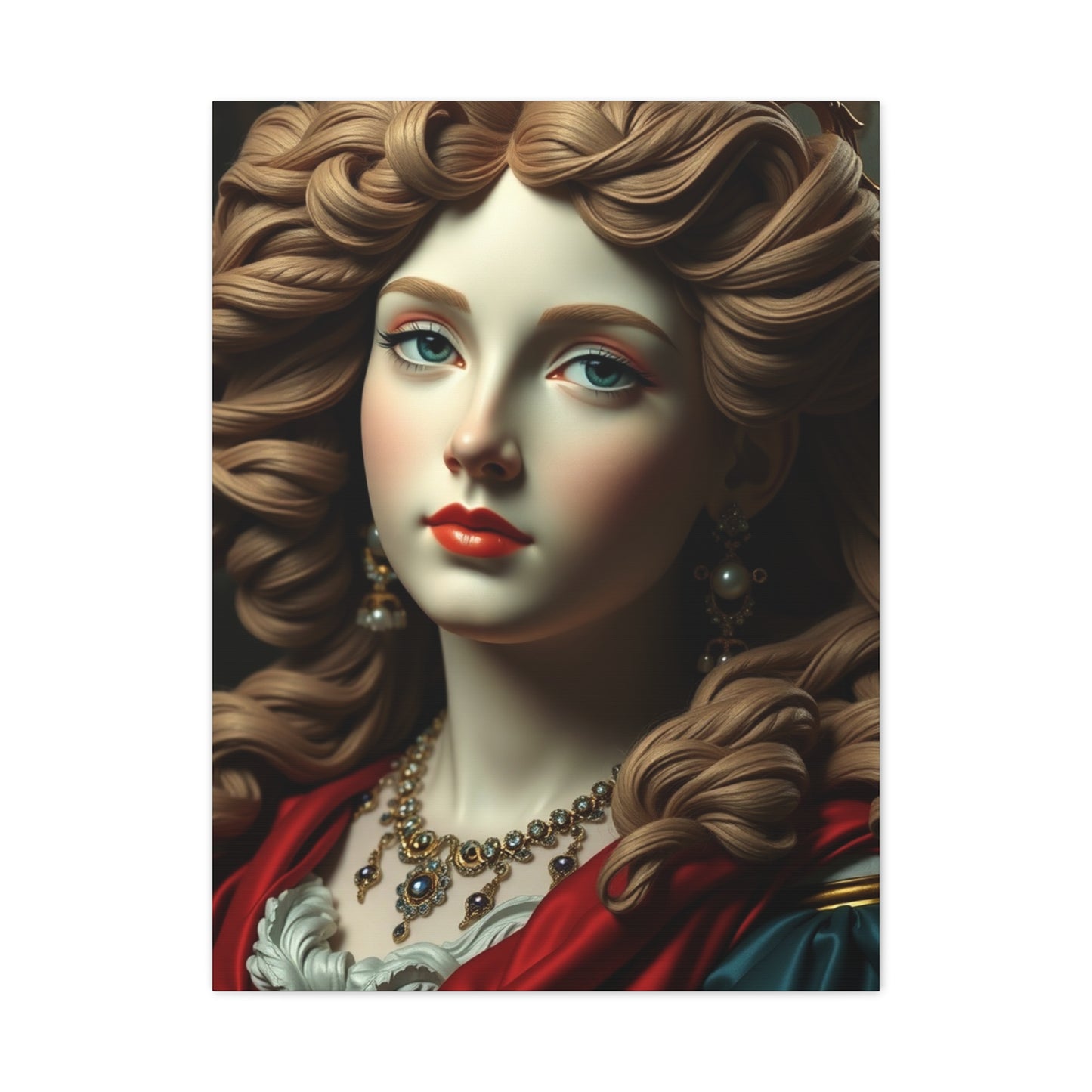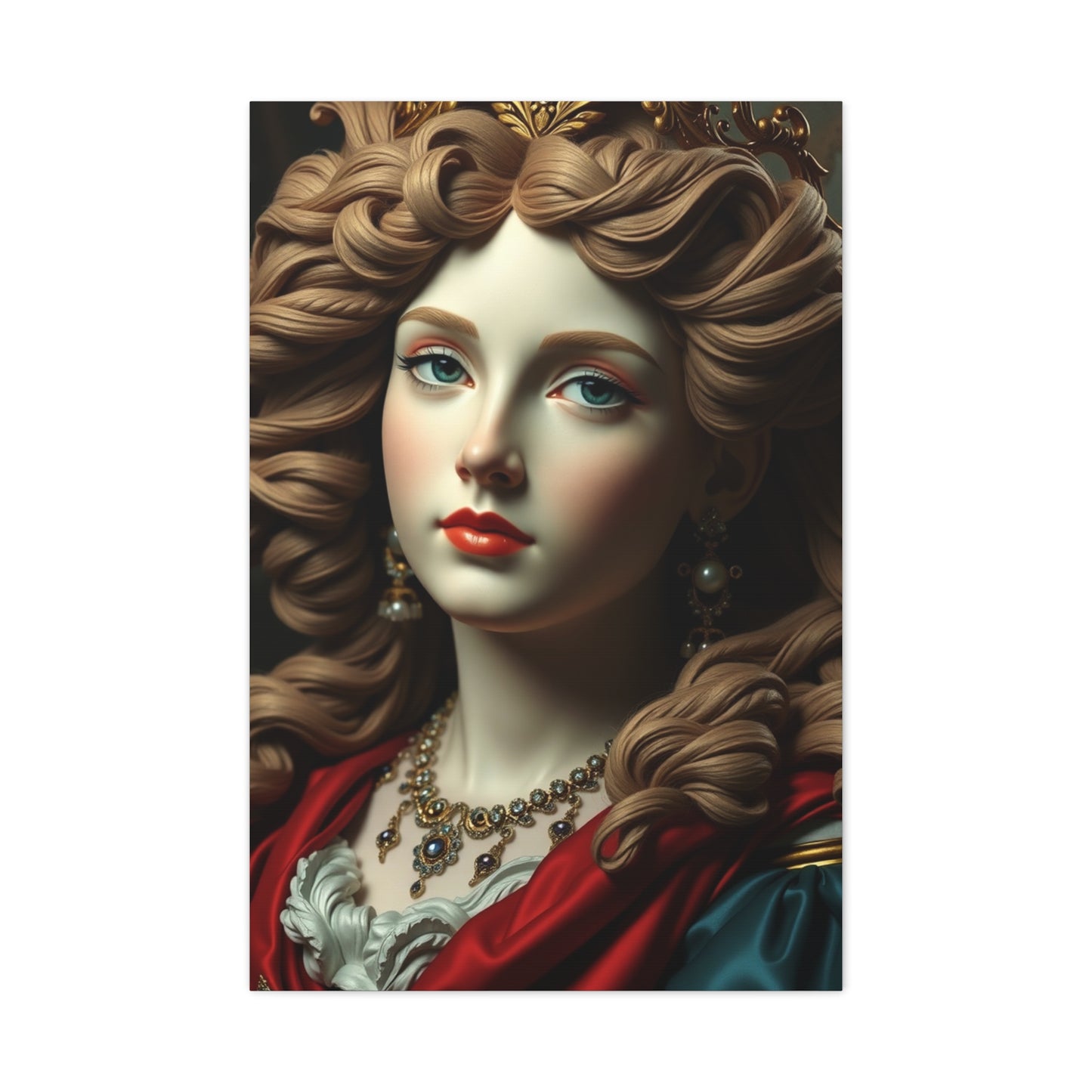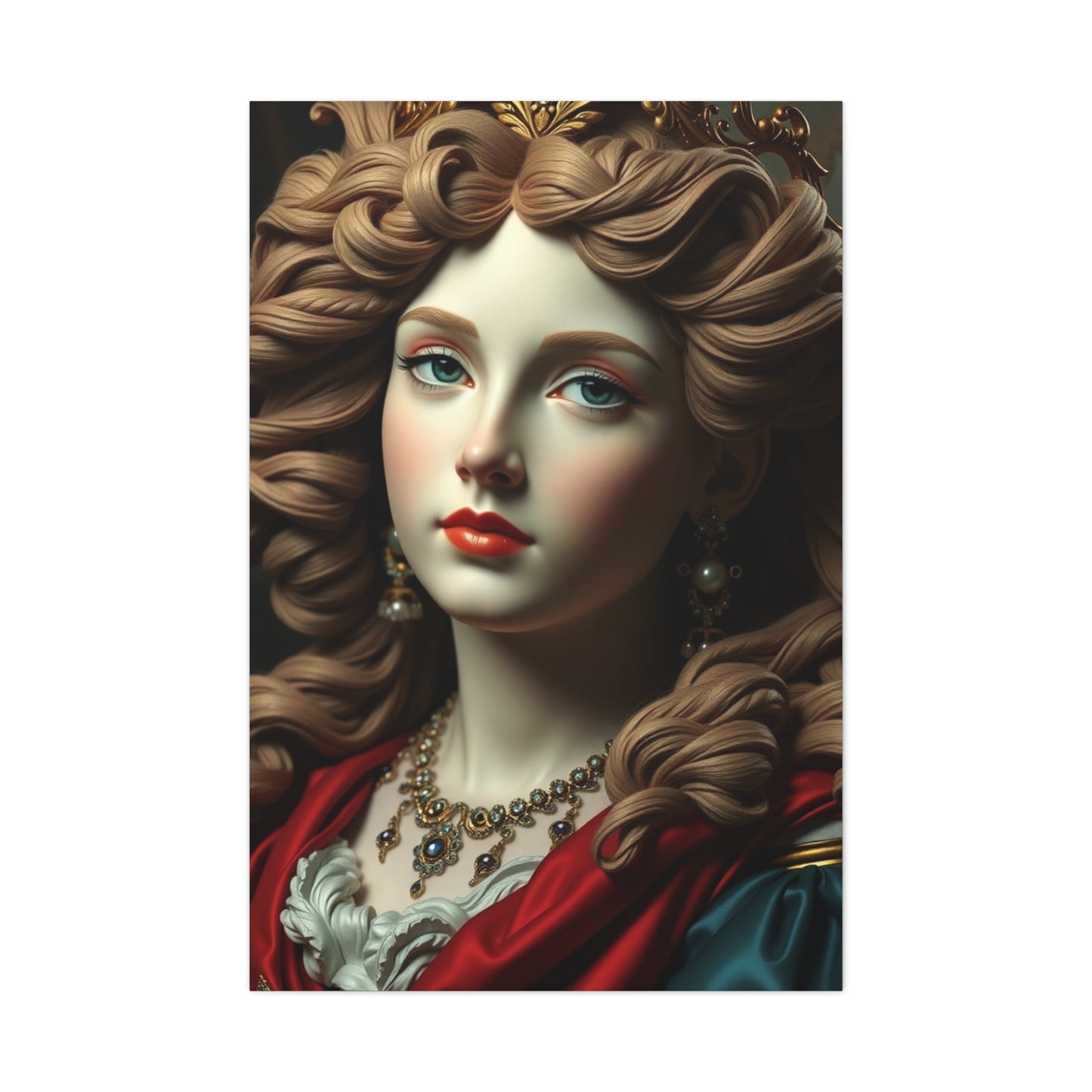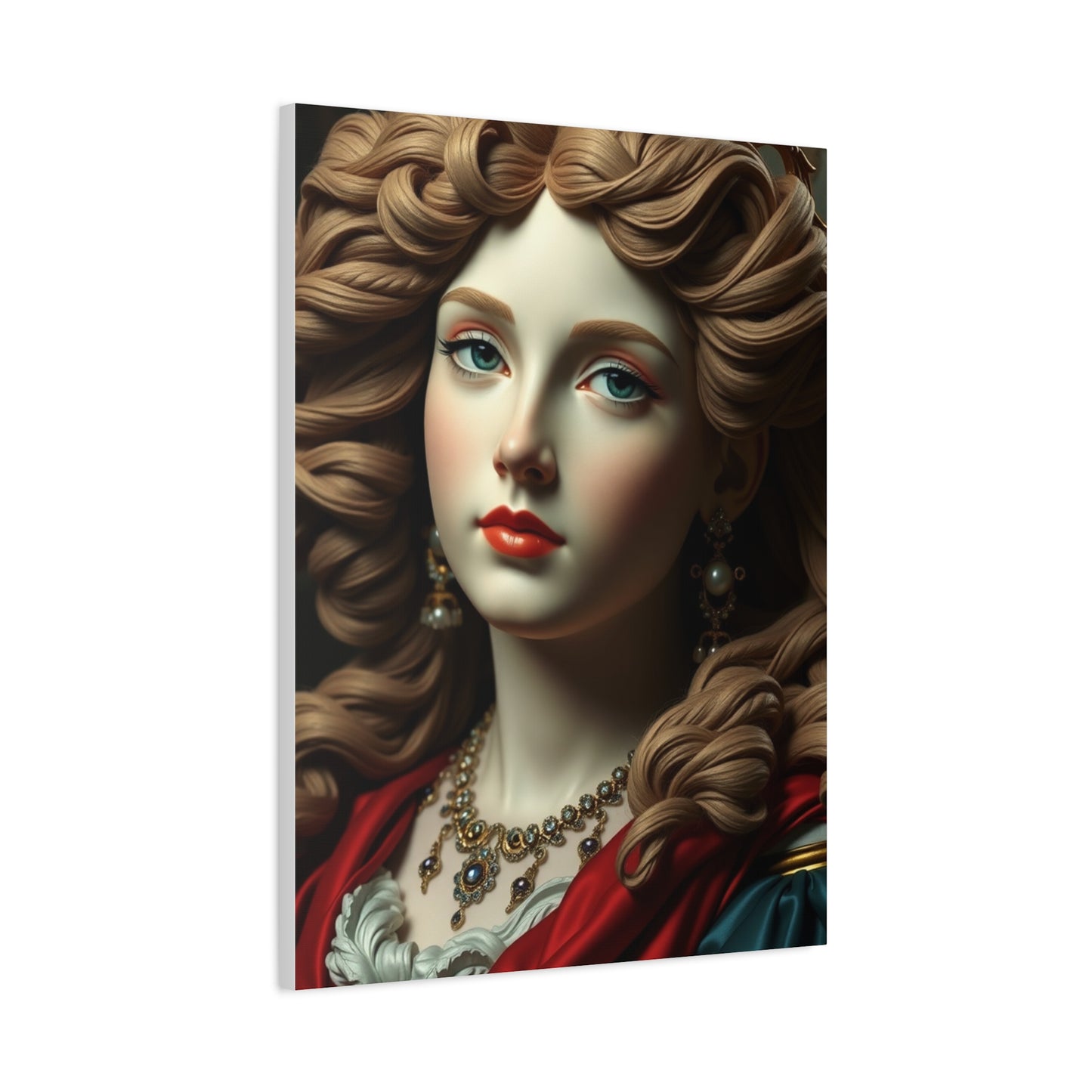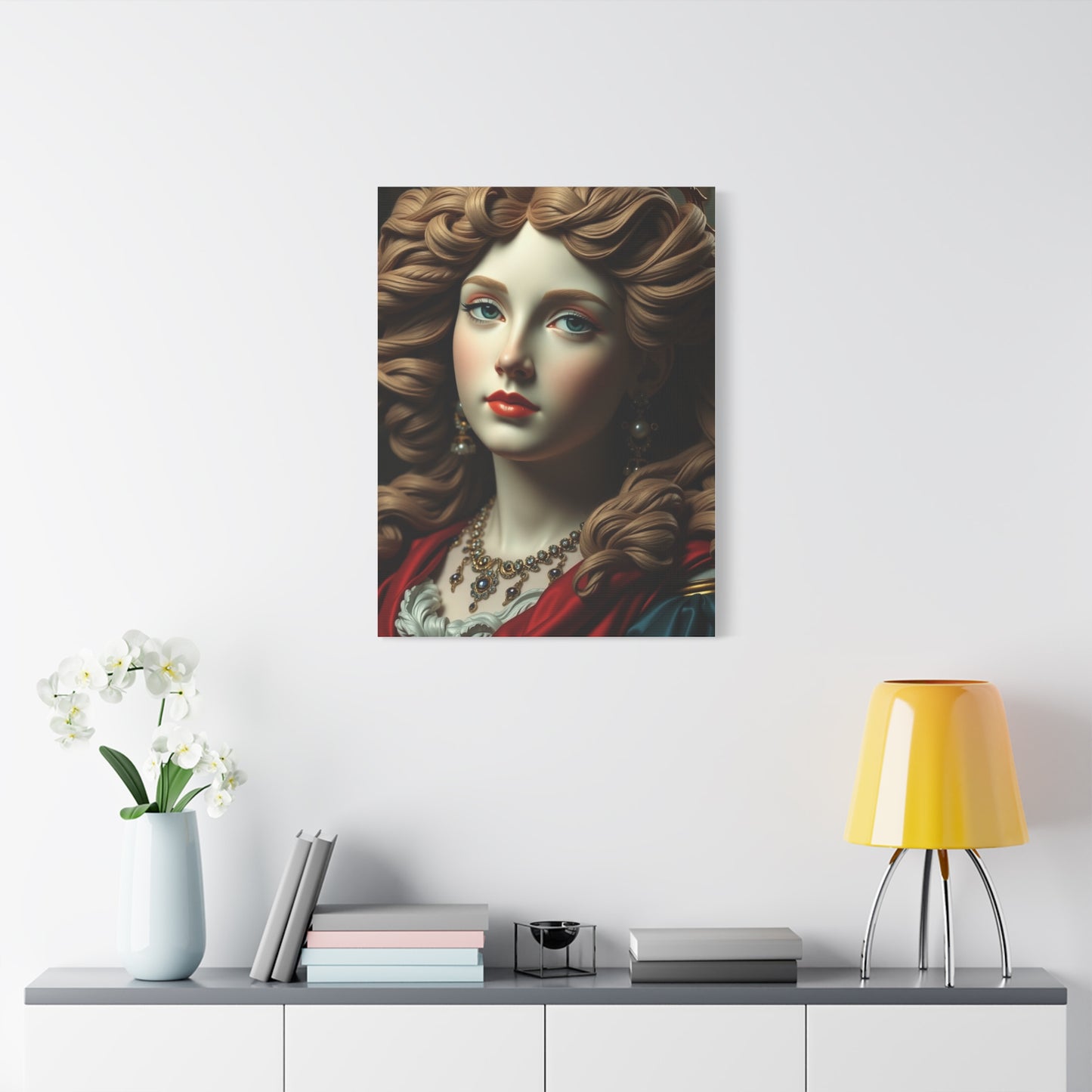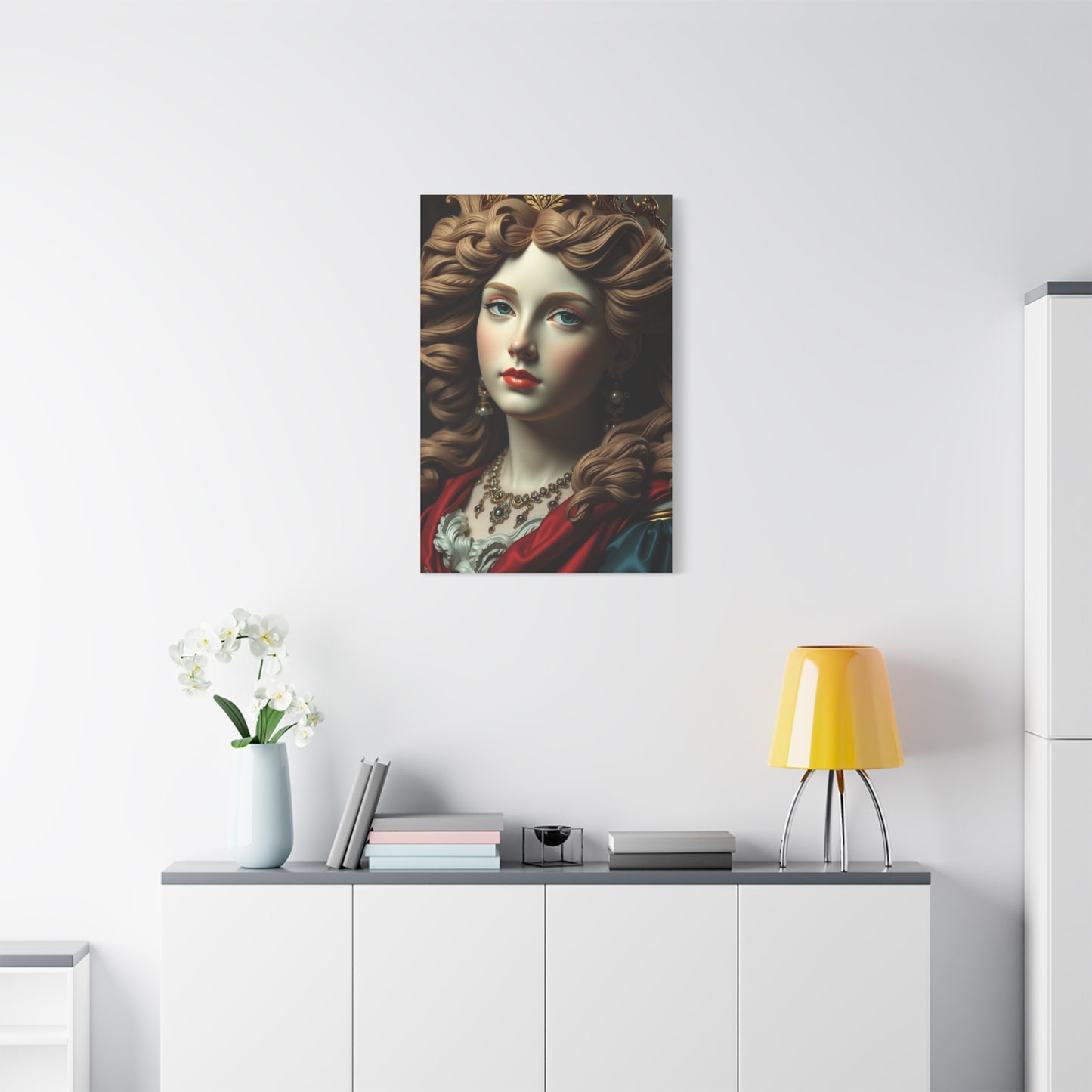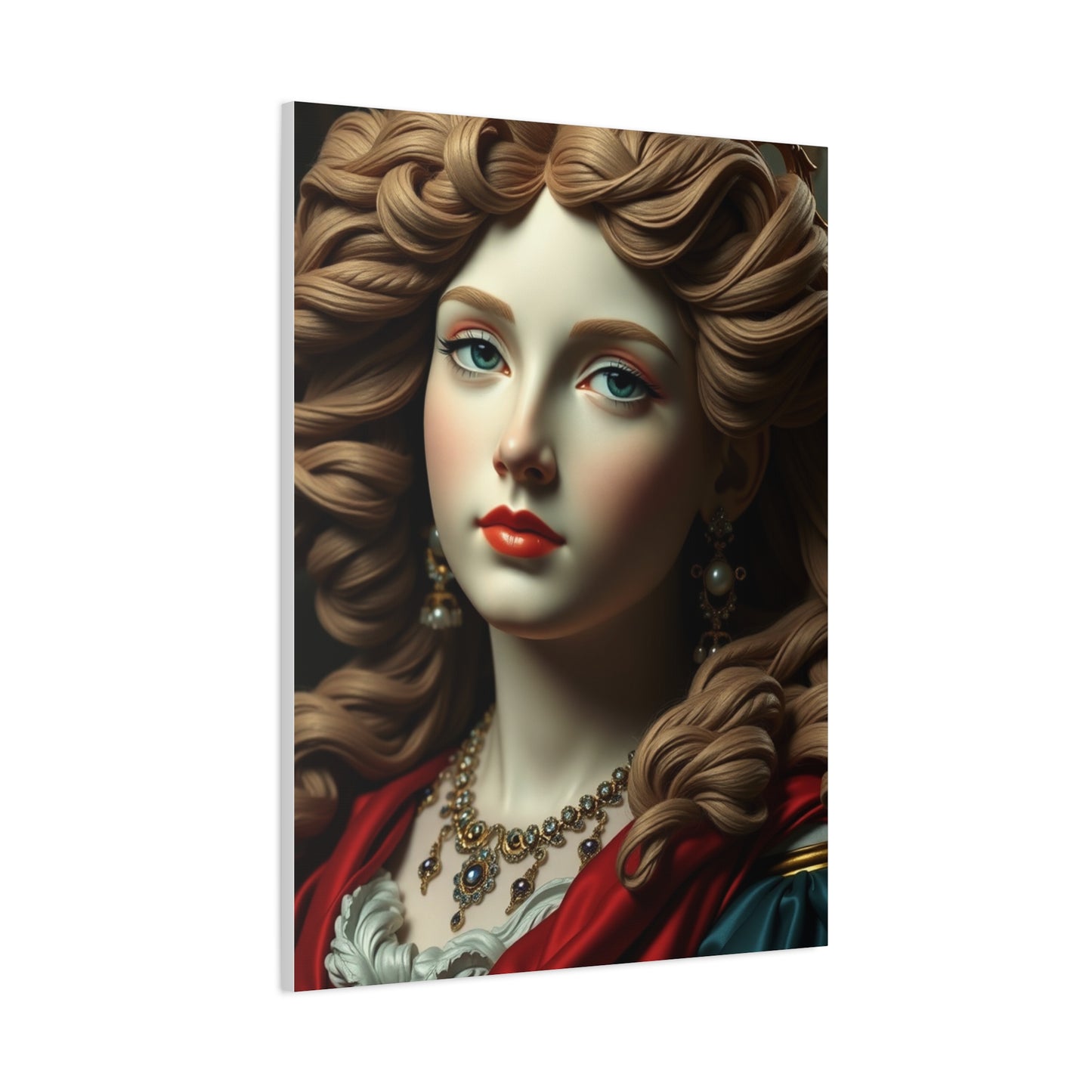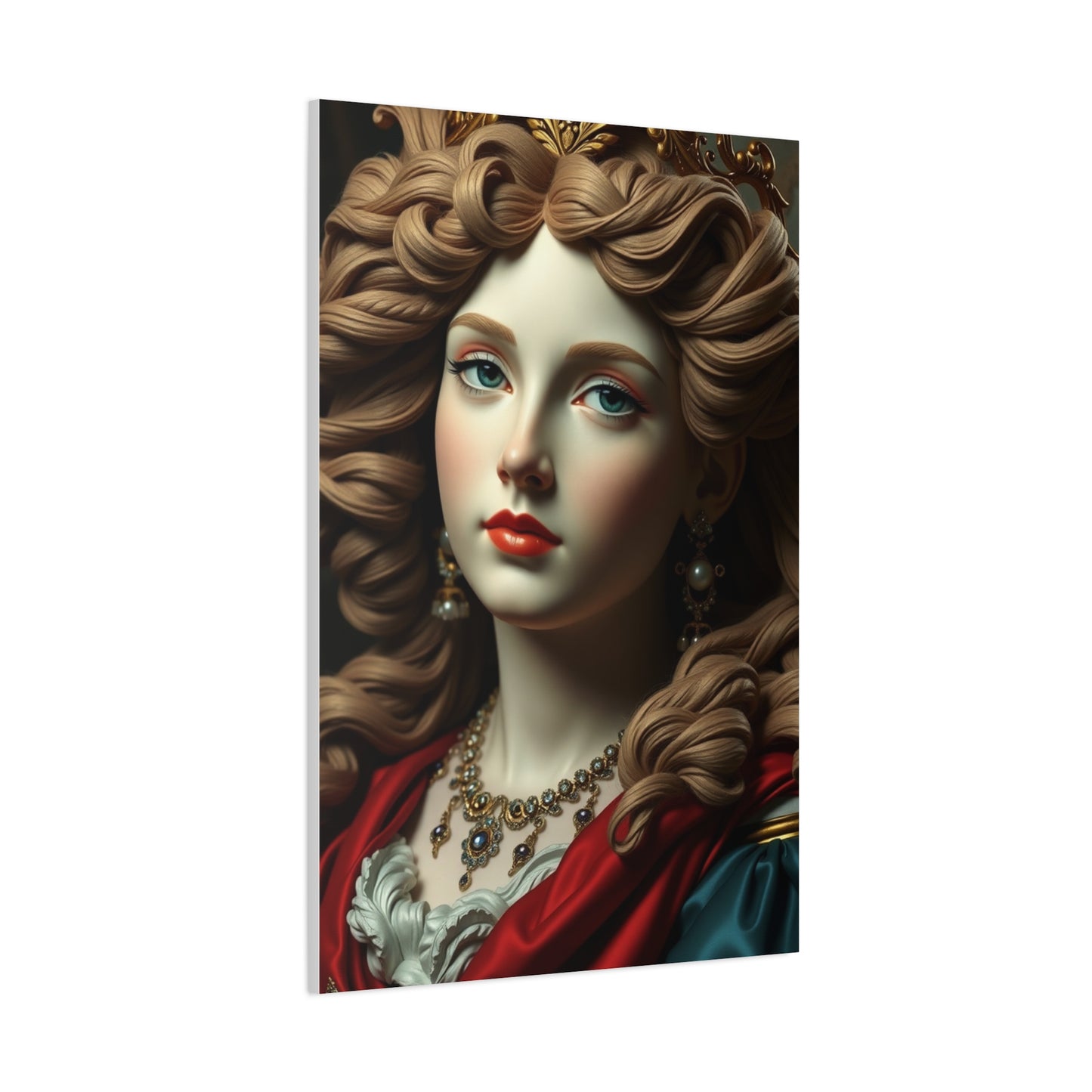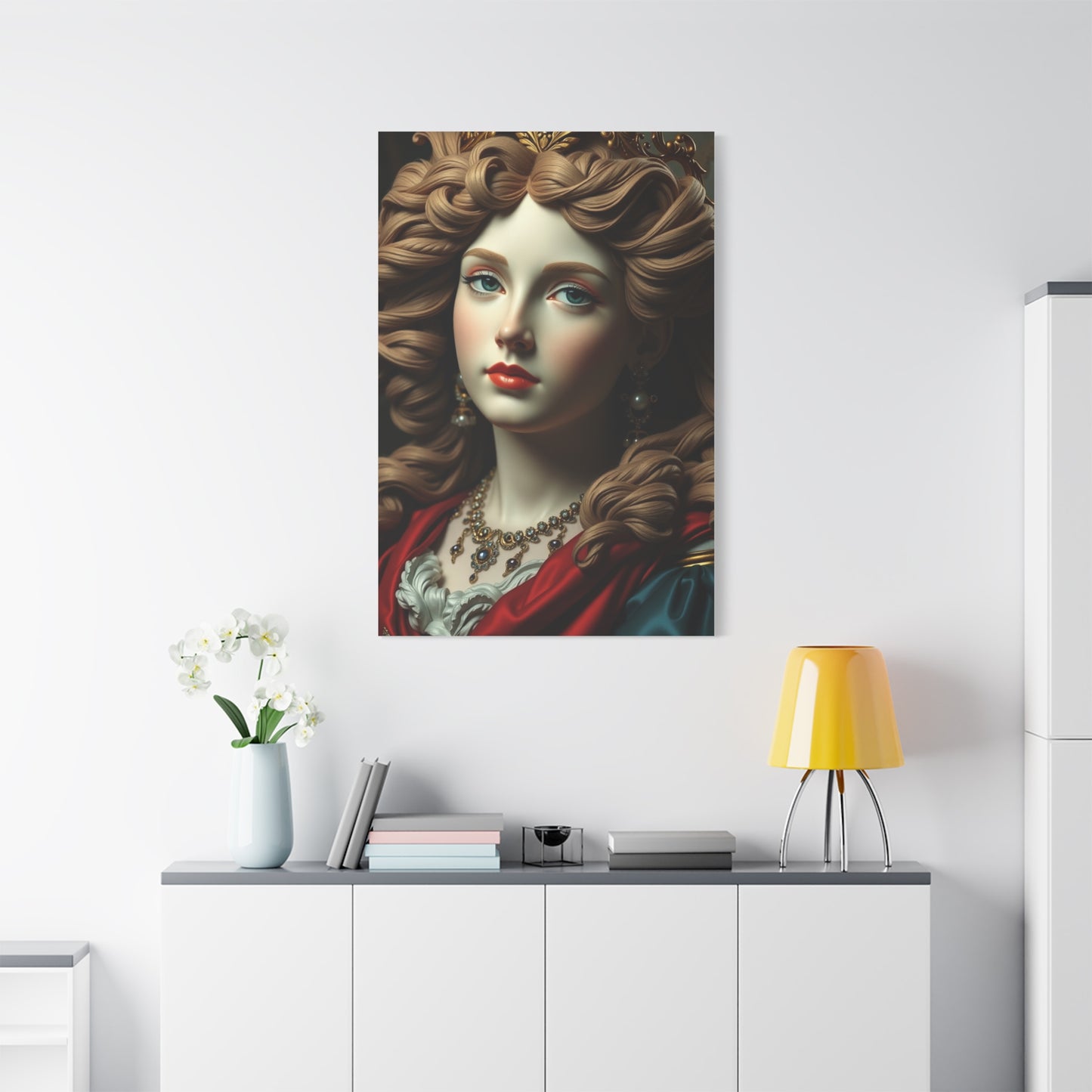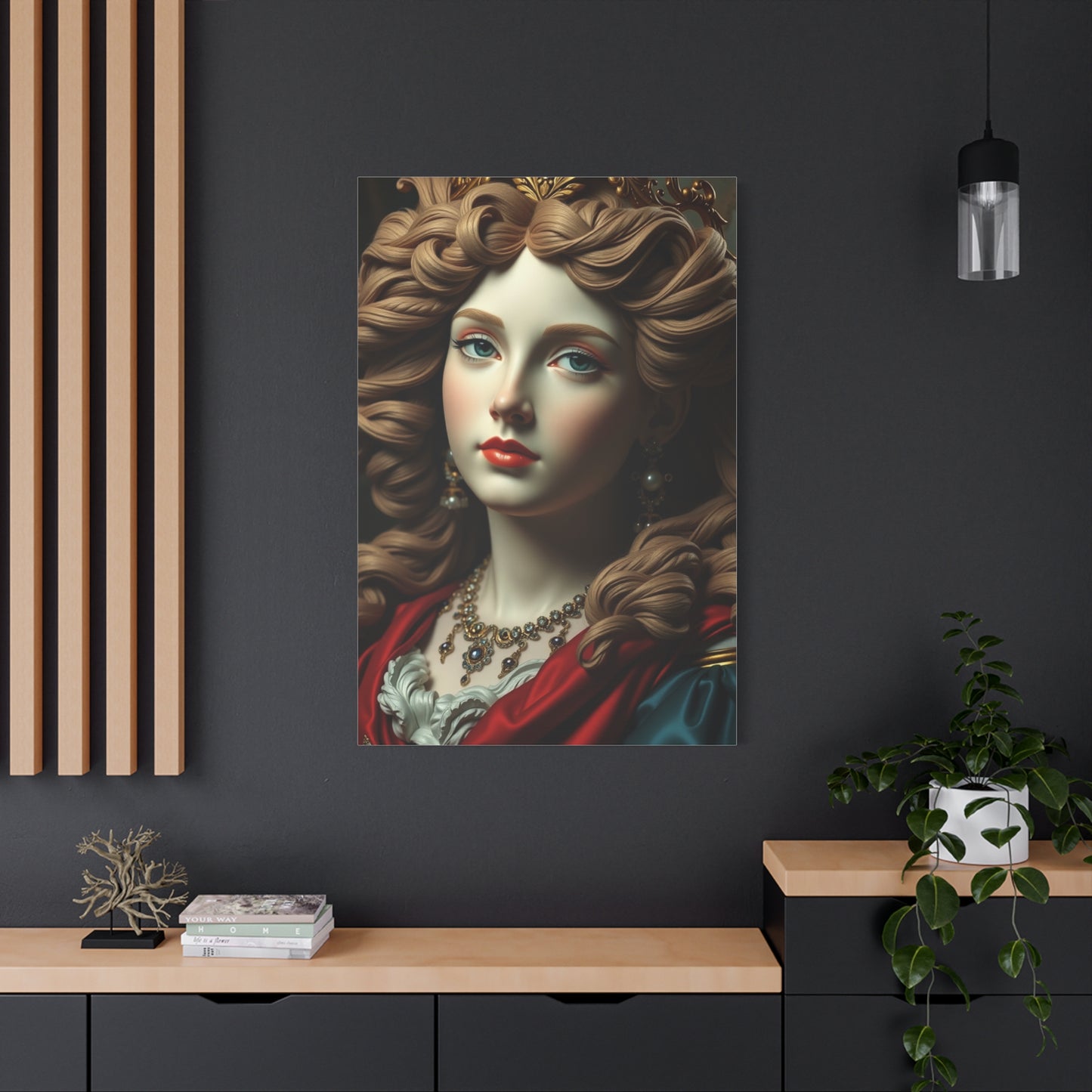Baroque Lustre Canvas Wall Art: Infusing Your Home with Rich Details and Timeless Beauty
The world of interior decoration has witnessed countless trends come and go, yet certain artistic movements continue to captivate homeowners and design enthusiasts alike. Among these enduring styles, the magnificent combination of ornate historical aesthetics with contemporary presentation methods creates something truly remarkable. When classical grandeur meets modern display techniques, the result is breathtaking artwork that transforms ordinary rooms into extraordinary showcases of refined taste and cultural appreciation.
This comprehensive exploration delves into every aspect of incorporating luxurious historical artistry into contemporary homes through premium quality printed materials. Whether you're a seasoned collector or someone just beginning to appreciate the finer elements of interior decoration, understanding the nuances of this artistic approach will empower you to make informed decisions that enhance your living environment for years to come.
Understanding the Rich Historical Context of Ornate Classical Artistry
The period spanning from the late sixteenth century through the mid-eighteenth century produced some of the most visually stunning artistic achievements in human history. Characterized by dramatic expressions, rich color palettes, and intricate detailing, this era's creative output reflected the cultural, religious, and political dynamics of European society during a time of tremendous change and innovation.
Artists working during this golden age employed techniques that emphasized emotional intensity and visual grandeur. They mastered the interplay of light and shadow to create depth and dimension that seemed to bring their subjects to life. The compositions often featured elaborate architectural elements, flowing drapery, and dynamic arrangements that guided the viewer's eye across the entire work. Religious themes dominated much of the output, though portraiture and mythological subjects also received significant attention from talented creators.
The technical mastery displayed in works from this period remains unmatched in many respects. Painters spent years perfecting their craft, learning to mix pigments that would retain their vibrancy across centuries, and developing brushwork techniques that could render everything from delicate lace to powerful storms with equal conviction. The attention to detail extended to every corner of their compositions, ensuring that even background elements received careful consideration and skilled execution.
Understanding this historical foundation helps contemporary admirers appreciate why these artistic achievements continue to resonate so powerfully. The combination of technical excellence, emotional expression, and visual magnificence transcends temporal boundaries, speaking to something fundamental in human aesthetic appreciation. When these masterful creations are translated into modern display formats, they bring centuries of artistic tradition directly into contemporary living spaces.
The Evolution of Displaying Masterpiece Reproductions in Modern Homes
Interior decoration has undergone remarkable transformations over the past several decades. Where previous generations relied primarily on framed prints behind glass or original works reserved for the wealthy, today's homeowners enjoy unprecedented access to high-quality reproductions that capture the essence of historical masterpieces while fitting seamlessly into modern lifestyles.
The technological advances in printing and material sciences have revolutionized how we bring art into our homes. Digital scanning techniques now capture every nuance of original paintings with microscopic precision, preserving subtle color variations and textural details that earlier reproduction methods missed entirely. High-resolution imaging combined with sophisticated color management systems ensures that printed versions maintain remarkable fidelity to their sources.
Contemporary presentation methods offer significant advantages over traditional approaches. The elimination of glass barriers creates more intimate viewing experiences, allowing observers to appreciate artwork without reflective glare or physical separation. The lightweight nature of modern materials makes installation straightforward, while durability improvements mean these pieces can maintain their beauty through years of display without the fragility concerns associated with older reproduction techniques.
The shift toward frameless presentation reflects broader design trends emphasizing clean lines and uncluttered aesthetics. Rather than elaborate gilded frames that compete for attention, modern approaches let the artwork itself take center stage. This minimalist philosophy paradoxically enhances the impact of ornate classical compositions, creating interesting visual contrasts that work surprisingly well in contemporary settings.
Affordability represents another crucial factor in the democratization of fine art reproduction. Where acquiring original historical works remains financially impossible for most individuals, modern printing technologies deliver museum-quality visual experiences at accessible price points. This accessibility has expanded the audience for classical art appreciation, introducing new generations to masterworks they might otherwise encounter only through books or occasional museum visits.
Material Selection and Quality Considerations for Long-Lasting Displays
The foundation of any successful art reproduction lies in the materials used for printing and display. Not all surfaces accept ink equally well, and the choice of substrate significantly impacts both the immediate visual impression and the long-term durability of the finished piece. Understanding these material considerations helps buyers make informed decisions that align with their aesthetic preferences and practical requirements.
Premium quality textile surfaces offer several distinct advantages for art reproduction. The woven texture provides subtle depth that enhances visual interest without overwhelming the printed image. Unlike paper-based alternatives that can appear flat or lifeless, textile materials interact with ambient light in complex ways that add dimensionality to the displayed work. This characteristic proves particularly beneficial when reproducing paintings that originally featured layered brushwork and textured surfaces.
The stretching process contributes significantly to the final presentation quality. Properly tensioned material creates a taut display surface that eliminates wrinkles, sags, or distortions that would detract from the viewing experience. Professional stretching techniques ensure even tension across the entire surface, preventing the development of stress points that could lead to warping over time. The edges receive careful attention, with wrapping techniques that create clean, finished appearances suitable for frameless display.
Coating technologies protect printed surfaces from environmental factors that could degrade image quality. Ultraviolet radiation from sunlight represents a primary concern, as prolonged exposure can fade pigments and cause color shifts that diminish visual impact. Advanced protective treatments filter harmful wavelengths while maintaining transparency, preserving color accuracy without altering the intended appearance. These coatings also provide resistance to moisture, dust, and minor physical contact, extending the functional lifespan of displayed pieces.
The backing materials supporting the printed surface deserve consideration as well. Rigid support structures prevent sagging and maintain proper tension, while allowing adequate air circulation to prevent moisture accumulation. Quality backing systems incorporate hanging hardware that distributes weight evenly, reducing stress on mounting points and ensuring secure installation. The overall construction should feel substantial without becoming excessively heavy, balancing durability with practical handling considerations.
Decoding the Visual Language of Elaborate Historical Compositions
The artistic output from the ornate classical period employed a sophisticated visual vocabulary that contemporary viewers can learn to interpret and appreciate. Understanding the symbolic elements, compositional strategies, and stylistic conventions enhances engagement with these works, transforming passive observation into active dialogue with artistic tradition.
Compositional dynamics in classical masterworks rarely occurred by accident. Artists carefully orchestrated the arrangement of figures, architectural elements, and atmospheric effects to guide viewer attention and create specific emotional responses. Diagonal arrangements introduced energy and movement, while triangular compositions provided stability and harmony. The placement of focal points, use of directional lighting, and strategic employment of contrast all served deliberate purposes within the overall design.
Color theory applications in historical works demonstrate remarkable sophistication. Artists understood how warm and cool tones interact, using these relationships to create spatial depth and emotional temperature. Golden yellows and rich reds might dominate foreground elements, while cooler blues and greens receded into background spaces. The harmony or intentional discord of color relationships contributed to the overall mood and meaning of each composition.
Symbolic elements appear throughout classical artworks, carrying meanings that educated viewers of the period would have immediately recognized. Religious iconography conveyed theological concepts, while mythological references communicated moral lessons or cultural values. Even seemingly mundane objects often carried symbolic weight, their inclusion within compositions adding layers of meaning beyond simple representation. Understanding these symbolic traditions enriches modern appreciation, though the visual power of these works remains accessible even without specialized knowledge.
The rendering of light constitutes one of the most impressive technical achievements of classical painting. Artists developed techniques for depicting various lighting conditions, from the soft diffusion of overcast skies to the dramatic intensity of single candles illuminating dark interiors. The play of highlights and shadows created form, defined space, and directed emotional tone. Translating these subtle lighting effects into printed reproductions requires exceptional attention to tonal range and color accuracy.
Selecting the Perfect Dimensions for Your Display Space
Choosing appropriate sizes for art displays involves balancing multiple considerations including room dimensions, viewing distances, surrounding furnishings, and personal preferences. The same image can create vastly different impressions depending on its physical scale, making size selection a crucial decision in the acquisition process.
Large-scale presentations make bold statements that can anchor entire room designs. Oversized pieces command attention immediately upon entering a space, establishing themselves as focal points around which other design elements arrange themselves. These substantial displays work particularly well in generous spaces with high ceilings and open floor plans, where their impressive presence can be properly appreciated without overwhelming the environment. The immersive quality of large works allows viewers to lose themselves in details, discovering new elements with each viewing.
Medium-sized options offer versatility that suits a wide range of applications. These pieces provide significant visual impact without dominating their surroundings, making them ideal for standard residential rooms where balance between artwork and living space is desired. Medium dimensions work well in groupings, allowing the creation of gallery walls or coordinated displays that tell visual stories through multiple related pieces. Their manageable scale simplifies installation while still delivering satisfying visual presence.
Smaller formats serve specialized purposes in interior design schemes. Intimate works create personal moments within larger spaces, drawing viewers closer for detailed examination. These pieces excel in cozy settings like reading nooks, home offices, or bedroom environments where subtle sophistication is preferred over dramatic impact. Collections of smaller works can be arranged in creative configurations, offering flexibility that larger pieces cannot provide.
The relationship between artwork dimensions and viewing distance follows principles that enhance visual comfort and appreciation. Standing too close to oversized pieces prevents proper perception of the overall composition, while viewing small works from excessive distances loses detail and impact. Consider the typical positions from which the artwork will be observed, ensuring that the scale creates comfortable, engaging viewing experiences under normal use conditions.
Wall space availability obviously constrains size options, but thoughtful approaches can maximize impact within existing limitations. Measuring available areas carefully before making purchase decisions prevents disappointing fit issues. Remember to account for surrounding elements like furniture, doorways, and architectural features that might affect perceived balance. Sometimes leaving breathing room around artwork enhances its impact more effectively than maximizing every inch of available wall space.
Mastering Color Psychology in Ornate Classical Art Selection
The psychological and emotional effects of color have been studied extensively, revealing how different hues influence mood, perception, and even physiological responses. When selecting ornate classical artwork for display, understanding these color dynamics helps create environments that support desired atmospheres and emotional tones.
Warm color palettes dominated by reds, oranges, and golden yellows create feelings of warmth, energy, and passion. These vibrant schemes work beautifully in social spaces where stimulating conversation and activity are welcomed. Historical paintings featuring dramatic scenes often employed these warm palettes to heighten emotional intensity and draw viewers into the depicted action. In contemporary settings, these energetic works can invigorate dining rooms, living areas, or any space where vitality is desired.
Cool color schemes emphasizing blues, greens, and purples tend to produce calming, contemplative atmospheres. Classical works featuring serene landscapes, peaceful religious scenes, or tranquil domestic moments often utilized these cooler palettes to reinforce their quiet dignity. Modern applications might place these soothing pieces in bedrooms, meditation spaces, or professional environments where focus and tranquility support primary activities.
Neutral-toned compositions built around browns, grays, and muted earth tones offer sophisticated versatility. These understated palettes complement diverse decorating schemes without clashing with existing color commitments. Historical portraits and still life works frequently employed restrained color approaches that emphasized form, texture, and subtle tonal variations over chromatic intensity. Contemporary placement of these neutral works provides flexibility, as they harmonize with both bold and subdued surrounding palettes.
The interplay between artwork colors and room furnishings creates overall environmental effects that exceed the sum of individual elements. Complementary relationships where artwork picks up accent colors present elsewhere in the room establish cohesive design unity. Alternatively, artworks can introduce contrasting color notes that add visual interest and prevent monotonous schemes. Consider existing textiles, painted surfaces, and decorative objects when selecting pieces, evaluating how the introduced colors will interact within the complete environment.
Lighting conditions dramatically affect color perception, making it essential to consider how artwork will appear under various illumination scenarios. Natural daylight reveals colors with maximum accuracy and vibrancy, while incandescent lighting adds warm casts and LED sources can introduce cool or neutral tones depending on their specifications. Viewing potential acquisitions under lighting conditions similar to those in the intended display location provides the most reliable preview of actual appearance.
Strategic Placement Strategies for Maximum Visual Impact
The location chosen for displaying artwork significantly influences its effectiveness and the overall success of interior design schemes. Strategic placement considers multiple factors including lighting conditions, viewing angles, surrounding elements, and traffic patterns to optimize both aesthetic impact and practical functionality.
Eye-level positioning serves as the general guideline for artwork placement, though this recommendation requires some nuance in application. The center point of displayed works should align approximately with the average eye height of viewers, typically ranging between fifty-five and sixty inches from the floor. This positioning creates comfortable viewing angles that neither strain necks nor diminish appreciation. Adjustments may be necessary based on ceiling heights, furniture arrangements, or when displaying multiple related pieces.
Above furniture placements represent common scenarios requiring special consideration. Artwork hung over sofas, credenzas, or dining buffets should maintain appropriate relationships with the furniture pieces they complement. Generally, leaving six to twelve inches of space between the furniture top and the artwork's lower edge creates visually pleasing proportion. The artwork width should relate harmoniously to the furniture width, typically spanning between one-half and three-quarters of the furniture's horizontal dimension.
Focal wall designations offer opportunities to make powerful design statements. Identifying the natural focal point in each room, whether a fireplace mantel, the wall opposite the entrance, or a particularly prominent architectural feature, allows for strategic artwork placement that capitalizes on existing attention patterns. These feature positions deserve special consideration, as they receive disproportionate visual attention and significantly influence overall room character.
Gallery wall arrangements allow creative expression through multiple coordinated pieces. These collections can follow formal grid patterns that emphasize order and structure, or adopt more organic salon-style arrangements that create dynamic visual interest. When planning gallery walls, laying out the entire arrangement on the floor before committing to wall mounting helps visualize spacing and relationships. Maintaining consistent spacing between individual pieces, typically two to three inches, creates cohesion while allowing each work to retain its individual identity.
Lighting integration enhances artwork appreciation while creating atmospheric effects within rooms. Natural light from windows provides excellent illumination but requires consideration of sun angles that could cause glare or long-term fading. Supplemental artificial lighting, whether from ceiling fixtures, track lights, or dedicated picture lights, ensures proper illumination regardless of time or weather conditions. Adjustable lighting allows customization of intensity and direction, highlighting specific features while controlling overall ambiance.
Harmonizing Historical Grandeur with Contemporary Design Aesthetics
The marriage of ornate classical artwork with modern interior design might initially seem challenging, given the apparent stylistic differences between elaborate historical aesthetics and clean contemporary lines. However, this juxtaposition creates compelling visual dialogues that enrich living spaces with layered sophistication and cultural depth.
Contrast operates as a powerful design principle when integrating classical artwork into modern environments. The ornate details, rich colors, and dramatic compositions of historical masterpieces stand out beautifully against minimalist backgrounds, neutral color schemes, and uncluttered spaces. This intentional contrast prevents visual monotony while celebrating the unique qualities of both design approaches. The interplay between old and new creates dynamic tension that engages viewers and rewards continued attention.
Contemporary industrial aesthetics featuring exposed materials, metal accents, and raw finishes might seem incompatible with refined classical art, yet this combination produces surprisingly effective results. The juxtaposition of rough textures and polished artistry creates multi-dimensional spaces that feel both grounded and elevated. Historical paintings introduce warmth and humanity into potentially cold industrial environments, while the modern setting provides fresh context that reveals new dimensions within familiar artistic traditions.
Scandinavian minimalism embraces simplicity, functionality, and natural materials, creating serene environments that might appear challenged by ornate artwork. However, carefully selected classical pieces can serve as carefully curated focal points within these restrained spaces, providing visual richness without overwhelming the fundamental aesthetic. The key lies in selective placement and restraint, allowing each displayed work sufficient breathing room to shine without cluttering the intentionally spare environment.
Mid-century modern design shares surprising commonalities with classical artistic traditions despite obvious stylistic differences. Both approaches value craftsmanship, attention to detail, and thoughtful composition. The organic forms and warm wood tones characteristic of mid-century furnishings create welcoming backdrops for historical artwork, while the period's appreciation for art as integral to living spaces aligns philosophically with classical artistic values.
Eclectic maximalist approaches that celebrate abundance, pattern mixing, and bold color combinations provide natural homes for ornate classical artwork. These layered environments embrace visual complexity, allowing historical pieces to nestle comfortably among diverse decorative elements. The challenge in maximalist settings involves achieving harmonious abundance rather than chaotic clutter, requiring careful curation and thoughtful arrangement despite the apparently casual profusion.
Maintaining and Preserving Your Investment for Generational Enjoyment
Proper care and maintenance extend the lifespan of art displays while preserving their visual appeal across decades of enjoyment. Understanding appropriate preservation techniques protects your investment and ensures that displayed works continue delivering aesthetic pleasure for years to come.
Environmental control plays a crucial role in artwork preservation. Temperature extremes and fluctuations can affect materials in various ways, potentially causing expansion, contraction, or degradation over time. Maintaining stable indoor temperatures within comfortable ranges for human habitation generally provides suitable conditions for displayed artwork as well. Avoid placement near heating vents, air conditioning outlets, or exterior walls subject to temperature variations.
Humidity management deserves attention, as excessive moisture or extreme dryness can affect both printed surfaces and support materials. High humidity encourages mold growth, while excessively dry conditions can cause materials to become brittle. Most residential environments maintain adequate humidity levels naturally, but areas with extreme climates may benefit from humidifiers or dehumidifiers that create more stable conditions.
Direct sunlight exposure represents the most significant threat to long-term color preservation. Ultraviolet radiation gradually breaks down pigments, causing fading, color shifts, and overall degradation of image quality. While protective coatings provide some defense against UV damage, minimizing direct sun exposure remains the most effective preservation strategy. Consider window treatments that filter sunlight during peak intensity hours, or simply avoid placing valuable artwork in positions receiving sustained direct illumination.
Cleaning procedures should employ gentle approaches that remove accumulated dust without damaging printed surfaces. Soft, dry microfiber cloths work well for routine dusting, using light strokes that follow a consistent direction rather than circular motions that might cause scratching. Avoid liquid cleaners, harsh chemicals, or abrasive materials that could damage protective coatings or printed surfaces. For more substantial cleaning needs, consult preservation professionals rather than attempting aggressive interventions.
Regular inspections allow early detection of potential issues before they develop into serious problems. Periodically examine displayed works for signs of fading, discoloration, surface damage, or structural concerns. Check hanging hardware to ensure continued security, tightening or replacing components as needed. Address any identified issues promptly, as minor problems often prove easier and less expensive to resolve than major deterioration.
Exploring Thematic Categories Within Classical Masterwork Collections
The vast output of the ornate classical period encompasses diverse subject matter that appeals to varied tastes and serves different decorative purposes. Understanding these thematic categories helps buyers identify works that resonate personally while serving specific design objectives within their homes.
Religious narratives dominate much of the classical canon, reflecting the period's cultural context and patronage patterns. These works range from intimate devotional pieces to monumental representations of biblical events. The emotional intensity and dramatic compositions characteristic of religious subjects make them powerful focal points, while their universal themes continue speaking to contemporary audiences regardless of personal faith commitments. The artistic mastery displayed in rendering divine subjects represents some of the period's greatest achievements.
Mythological scenes provided artists opportunities to explore human nature through symbolic narratives drawn from classical antiquity. Gods, heroes, and legendary creatures populate these imaginative compositions, their stories serving as vehicles for examining virtue, vice, passion, and consequence. The fantastical elements allow for creative license in composition and symbolism, while the underlying human dramas ensure continued relevance. These works bring narrative interest and conversational starting points into contemporary interiors.
Portrait traditions flourished during the classical period, documenting nobility, clergy, merchants, and cultural figures with varying degrees of formality and psychological penetration. Some portraits maintain distant dignity, presenting their subjects as idealized representatives of social stations. Others reveal intimate character studies that seem to capture fleeting expressions and inner life. Historical portraits introduce human presence into rooms, their subjects' gazes creating subtle psychological dynamics within spaces.
Landscape artworks celebrated natural beauty while demonstrating technical mastery in rendering atmospheric effects, vegetation, and topographical features. These works range from idyllic pastoral scenes to dramatic mountainscapes and seascapes. The calming effect of landscape imagery makes these pieces particularly suitable for relaxation spaces, while their often expansive compositions can visually enlarge modest rooms. Seasonal variations within landscape traditions allow selections that resonate with personal preferences or regional environments.
Still life compositions elevated everyday objects to subjects worthy of sustained artistic attention. Flowers, fruits, hunting trophies, musical instruments, and luxury goods receive meticulous treatment that celebrates material abundance while often embedding symbolic meanings. The controlled compositions and careful lighting of still life works create intimate viewing experiences, while their subject matter offers accessible entry points for viewers less familiar with historical or religious narratives.
Creating Cohesive Multi-Piece Displays and Gallery Arrangements
Single statement pieces deliver powerful impact, but thoughtfully arranged multiple-work displays offer different aesthetic opportunities. Creating successful multi-piece arrangements requires attention to relationships between individual works, overall compositional balance, and the unified impression created by the collection.
Thematic coherence provides one approach to organizing multiple-work displays. Selecting pieces that share subject matter, color palettes, or stylistic characteristics creates visual harmony that helps individual works feel like intentional collections rather than random assemblages. A series exploring variations on similar themes rewards repeated viewing as observers discover both consistencies and contrasts across the related works.
Narrative progression arrangements tell visual stories through sequential pieces. This approach might trace a single story across multiple panels, document progressive stages of a process, or explore thematic development through related subjects. Viewers experience these arrangements by following the intended sequence, creating engagement that extends beyond appreciation of individual components.
Symmetrical layouts emphasize order, balance, and formal dignity. These arrangements might feature matching pairs flanking central focal pieces, or mirror-image compositions that create architectural stability. The precision required for successful symmetrical arrangements demands careful measurement and installation, but the resulting impression of deliberate design rewards this attention to detail.
Asymmetrical arrangements offer dynamic visual interest through carefully managed imbalance. These compositions position varied elements in relationships that achieve overall equilibrium despite lacking literal symmetry. Successful asymmetrical groupings require sensitive attention to visual weight, considering how size, color intensity, and compositional complexity affect balance. The apparent informality of asymmetrical arrangements often creates more relaxed, approachable atmospheres than rigid symmetrical alternatives.
Vertical stacking maximizes impact in spaces with limited horizontal wall area but generous ceiling height. These arrangements draw the eye upward, emphasizing vertical proportions while making efficient use of available surfaces. Vertical galleries work particularly well in hallways, staircases, or narrow wall sections where horizontal spreading would prove impractical.
Grid formations bring contemporary organizational clarity to multiple classical works. The regular spacing and aligned edges of grid arrangements create clean, modern presentations that paradoxically enhance appreciation of ornate traditional artwork. The systematic organization allows viewers to compare and contrast works easily while the overall impression communicates curatorial sophistication.
Seasonal and Occasional Display Rotation Strategies
While permanent installations offer consistency, rotating displayed artwork creates fresh experiences and allows larger collections to receive appropriate attention. Strategic rotation approaches maximize enjoyment of accumulated works while keeping living spaces feeling current and engaging.
Seasonal rotations align displayed artwork with changing times of year, selecting pieces whose subjects, colors, or moods complement seasonal characteristics. Landscapes featuring spring blooms might replace winter scenes as weather warms, while harvest themes could appear during autumn months. These rotations create harmony between interior environments and the natural yearly cycle.
Occasional rotations tied to holidays, personal milestones, or special events create temporary displays that enhance celebrations while introducing variety. Religious works might receive prominence during relevant observance periods, while festive pieces could appear around holidays. These temporary installations create special atmospheres without requiring permanent space commitments.
Mood-based rotations allow adjustment of environmental atmosphere to support changing personal needs or preferences. Tranquil works might be emphasized during stressful periods when calming influences prove beneficial, while more energetic pieces could be featured when inspiration and motivation are desired.
Collection expansion strategies recognize that available display space typically limits how many works can be shown simultaneously. Building larger collections than can be displayed at once allows rotation that keeps environments feeling fresh while justifying continued acquisition of appealing works. This approach transforms collections into dynamic resources rather than static installations.
Storage considerations become important when maintaining collections larger than available display space. Proper storage protects works awaiting display from damage while keeping them accessible for rotation. Climate-controlled spaces away from moisture and temperature extremes preserve materials effectively. Wrapping individual pieces in acid-free materials prevents surface scratching and dust accumulation. Vertical storage positions often work better than stacking, which can create pressure points or cause warping over time.
Integrating Lighting Design to Enhance Artistic Presentations
The illumination surrounding and highlighting displayed artwork profoundly affects visual perception and overall aesthetic impact. Thoughtful lighting design elevates art appreciation while contributing to comprehensive interior ambiance that serves both functional and atmospheric purposes.
Natural daylight provides the most accurate color rendering, revealing artwork as it was intended to appear. Morning and afternoon light create different effects as sun angles shift, introducing temporal variety that keeps familiar works feeling fresh. However, direct sunlight must be managed carefully to prevent fading and heat damage. Sheer curtains, adjustable blinds, or strategic placement away from direct sun exposure allow enjoyment of natural light benefits while minimizing preservation risks.
Ambient artificial lighting establishes overall room illumination levels that affect how artwork appears within context. General lighting should provide sufficient brightness for comfortable vision without creating glare or washing out displayed works. Layered lighting approaches combining ambient, task, and accent sources offer flexibility for adjusting overall atmosphere while highlighting specific features.
Accent lighting dedicated specifically to artwork creates dramatic focal effects while ensuring proper illumination regardless of general room lighting levels. Track lighting systems offer adjustable positioning that can be refined to achieve optimal highlighting angles. Picture lights mounted directly above or beside displayed works provide focused illumination that enhances detail visibility. LED technology has revolutionized accent lighting, offering energy efficiency, minimal heat generation, and excellent color rendering that reveals artwork accurately.
Color temperature considerations affect the mood and appearance of illuminated artwork. Warm light sources around 2700-3000 Kelvin create cozy, intimate atmospheres that complement classical artwork's often warm color palettes. Neutral white sources around 3500-4000 Kelvin provide balanced illumination suitable for diverse works. Cool light above 5000 Kelvin creates crisp, energizing effects though may not flatter warmer-toned classical pieces.
Dimming capabilities allow lighting adjustment throughout the day and for different activities. Bright illumination facilitates detailed examination and creates energizing atmospheres, while reduced levels support relaxation and intimate gatherings. Programmable systems can automatically adjust lighting based on time of day or preset scenes, optimizing artwork presentation alongside overall room functionality.
Avoiding common lighting mistakes prevents problems that diminish display effectiveness. Positioning lights to create glare on displayed surfaces obscures rather than reveals artwork. Insufficient illumination fails to showcase pieces properly, while excessive brightness can feel harsh and uncomfortable. Uneven lighting that creates hot spots or leaves areas in shadow disrupts visual harmony and reduces overall impact.
Considering Environmental and Sustainability Factors
Contemporary consumers increasingly consider environmental impacts when making purchasing decisions across all product categories. Understanding sustainability dimensions of art reproductions helps align decorating choices with environmental values while supporting responsible industry practices.
Material sourcing practices vary significantly across manufacturers, with some prioritizing sustainable forestry, recycled content, and environmentally responsible supply chains while others remain focused solely on cost minimization. Researching supplier commitments to environmental responsibility allows consumers to reward better practices through purchasing decisions. Certifications from recognized environmental organizations provide third-party verification of sustainability claims.
Production processes affect environmental footprints through energy consumption, waste generation, and emissions. Modern digital printing technologies generally prove more environmentally friendly than older reproduction methods, using inks more efficiently and generating less waste. Facilities powered by renewable energy or implementing comprehensive recycling programs demonstrate stronger environmental commitments than those disregarding sustainability concerns.
Longevity considerations significantly impact environmental sustainability calculations. Durable products that maintain quality across decades generate far less environmental impact per year of service than cheaply made alternatives requiring frequent replacement. Investing in quality pieces that will remain attractive and functional for twenty or thirty years proves more environmentally responsible than repeatedly purchasing disposable products.
Packaging materials and shipping practices contribute to overall environmental impacts. Excessive packaging generates unnecessary waste, while inefficient shipping multiplies transportation-related emissions. Suppliers using recycled packaging materials, minimizing unnecessary boxing, and consolidating shipments demonstrate greater environmental consciousness. Local sourcing when available eliminates long-distance transportation impacts entirely.
End-of-life considerations matter when products eventually reach the end of their useful service. Materials that can be recycled or safely decompose prove more environmentally responsible than those destined for landfills where they'll persist indefinitely. Some manufacturers implement take-back programs that facilitate responsible disposal or recycling, closing the loop on product lifecycles.
Addressing Specific Room Challenges and Opportunities
Different rooms within homes present unique considerations for artwork display based on their functions, environmental conditions, and design characteristics. Tailoring selection and placement decisions to specific room contexts optimizes both aesthetic impact and practical functionality.
Living room displays benefit from the spacious walls and social character typical of these primary gathering areas. Large-scale statement pieces work beautifully as focal points around which conversational furniture arranges itself. The diverse viewing distances in living spaces, from across the room to close examination, favor works with both strong overall composition and rewarding details. Color selections might coordinate with existing design schemes or introduce contrasting accents that energize neutral palettes.
Bedroom environments call for artwork that supports relaxation and personal retreat. Serene subjects, soothing color palettes, and compositions suggesting tranquility create appropriate atmospheres for spaces dedicated to rest. More intimate works that reward close viewing from bed positions work better than dramatic pieces demanding distance. Personal taste should guide bedroom selections more directly than living spaces where guest preferences receive consideration.
Dining areas benefit from artwork that enhances social dining experiences without overwhelming conversation. Medium-sized pieces at appropriate heights for viewing from seated positions work well. Still life subjects featuring food and drink connect naturally with dining functions, though any appealing imagery creates pleasant surroundings. Color warmth that complements candlelight and creates inviting ambiance enhances the welcoming character desired in dining spaces.
Home offices require careful balance between professional atmosphere and personal expression. Classical artwork brings cultural sophistication that can enhance professional credibility while avoiding the generic corporate blandness of mass-produced office decor. Subjects suggesting contemplation, achievement, or intellectual pursuit reinforce productive mindsets. Avoid overly dramatic or emotionally intense works that might prove distracting during focused work.
Hallways and transitional spaces often receive less decorating attention despite offering excellent display opportunities. These areas can accommodate gallery arrangements that tell visual stories as people move through them. The linear character of hallways favors sequential arrangements or coordinated series. Good lighting becomes particularly important in these often under-illuminated spaces.
Bathrooms rarely receive art consideration beyond generic decorative prints, yet these personal spaces can successfully display quality reproductions if environmental factors receive attention. High humidity and temperature fluctuations present challenges requiring careful material selection. Avoid placement directly above tubs or in shower splash zones. Well-ventilated bathrooms with exhaust fans prove more suitable than steamy environments lacking moisture control.
Expanding Appreciation Through Complementary Decorative Arts
Classical artwork existed within broader decorative traditions that encompassed furniture, textiles, ceramics, and other applied arts. Understanding these connections and incorporating complementary decorative elements creates richer, more cohesive interior environments that celebrate historical aesthetic traditions comprehensively.
Period furniture styles developed alongside artistic movements, reflecting similar design philosophies and cultural values. Ornate carved details, rich wood tones, and elegant proportions characteristic of classical furniture complement artwork from the same period. While authentic antiques command premium prices, quality reproductions of classic furniture designs prove more accessible while creating appropriate contextual settings for displayed artwork.
Textile traditions including tapestries, rugs, and upholstery fabrics featured design elements and color palettes coordinating with artistic production. Incorporating textiles that echo artwork colors or stylistic characteristics strengthens visual connections across room elements. Rich textures and luxurious materials associated with classical periods add tactile dimensions that complement visual artistry.
Decorative objects such as sculpture, ceramics, and metalwork extend artistic traditions into three-dimensional forms. Displaying complementary decorative pieces alongside wall art creates layered environments that reward continued exploration. Collections combining two-dimensional and three-dimensional works offer varied aesthetic experiences while maintaining thematic coherence.
Architectural details including moldings, ceiling treatments, and wall paneling provide structural contexts for artwork display. While few contemporary homes feature elaborate historical architectural elements, selective incorporation of classical details creates appropriate backdrops for displayed artwork. Even modest additions like crown molding or picture rail systems enhance period compatibility.
Lighting fixtures designed in classical styles complete comprehensive decorative schemes. Chandeliers, sconces, and table lamps featuring traditional design elements reinforce historical aesthetic commitments while providing necessary illumination. Quality reproduction lighting fixtures offer period appearance without sacrificing modern electrical standards and efficiency.
Developing Curatorial Skills for Personal Collections
Approaching personal art collections with curatorial mindsets elevates casual accumulation into thoughtful assembly that tells coherent stories and reflects developing aesthetic sensibilities. Cultivating these skills enhances satisfaction while creating more meaningful relationships with displayed works.
Acquisition strategies benefit from deliberate planning rather than impulsive purchasing. Developing wish lists that identify desired subjects, styles, or specific works focuses shopping efforts and prevents random accumulation. Research potential acquisitions thoroughly, comparing quality levels and pricing across suppliers. Patient collectors willing to wait for ideal pieces often achieve more satisfying results than those making hasty compromises.
Documentation practices create valuable records of collection development. Maintaining files with purchase information, condition notes, and relevant research materials supports long-term collection management. Photographic documentation shows how displays evolve over time while providing records for insurance purposes. These records also help recognize patterns in collecting behavior that inform future decisions.
Deaccessioning discipline keeps collections focused and manageable. Periodically reviewing holdings identifies pieces that no longer resonate or serve current decorating needs. Moving beyond these works, whether through sale, gift, or donation, creates space for new acquisitions while maintaining collection quality. Refusing to become attached to every piece allows collections to evolve alongside developing tastes.
Exhibition planning approaches to home displays elevates arrangement beyond mere wall covering. Consider what stories or themes collections communicate, how individual pieces relate to each other, and what impressions overall displays create. This curatorial thinking produces more satisfying results than random placement.
Condition monitoring and conservation practices protect collection value and appearance. Regular inspections identify emerging issues before they become serious. Addressing minor problems promptly prevents escalation into major damage. While reproductions lack the conservation demands of originals, appropriate care extends their lifespan and maintains display quality.
Navigating Online Shopping for Art Reproductions Successfully
The proliferation of online art retailers offers unprecedented selection and convenience while presenting challenges related to evaluating quality without physical examination. Strategic online shopping approaches help consumers make confident purchases that meet expectations.
Supplier research establishes credibility and reliability before committing to purchases. Customer reviews provide insights into quality levels, shipping practices, and customer service responsiveness. Look for patterns across multiple reviews rather than focusing on isolated complaints or praise. Established retailers with substantial review histories offer more reliable indicators than new operations lacking track records.
Product specifications require careful examination to understand exactly what purchases include. Detailed descriptions should specify materials, dimensions, construction methods, and included hardware. High-resolution product images showing works from multiple angles help evaluate appearance. Beware vague descriptions or limited imagery suggesting attempts to conceal quality limitations.
Sample ordering allows firsthand quality evaluation before committing to larger purchases. Many suppliers offer small-scale samples or will sell single pieces from intended sets. The modest additional cost of receiving physical samples before placing major orders provides valuable insurance against disappointment. Direct examination reveals quality aspects that descriptions and photographs cannot fully communicate.
Return policies provide crucial consumer protections when shopping online. Generous return windows allowing quality inspection and installation experimentation demonstrate supplier confidence in their products. Understand return procedures, restocking fees, and responsibility for return shipping costs before purchasing. Avoid suppliers with restrictive policies that leave buyers stuck with unsatisfactory products.
Shipping considerations affect both costs and delivery timelines. Compare shipping charges across suppliers, as these can vary significantly and substantially affect total costs. Understand typical delivery timeframes and tracking capabilities. Ensure shipping methods include adequate packaging protection preventing damage during transit. International shipping may involve customs procedures and additional fees beyond stated prices.
Celebrating the Enduring Appeal of Classical Artistic Traditions
The continued popularity of ornate classical artwork centuries after its creation testifies to fundamental human responses to beauty, craftsmanship, and emotional expression that transcend temporal and cultural boundaries. Understanding this enduring appeal helps contextualize personal attraction while connecting individual experiences with broader patterns of aesthetic appreciation.
Technical mastery demonstrated by classical artists continues inspiring awe and admiration. The ability to render complex subjects with such precision using relatively simple tools represents achievement that modern viewers can appreciate even without artistic training. This respect for skill and dedication resonates with contemporary values celebrating excellence and craft mastery.
Emotional authenticity in classical works creates connections across centuries. The human experiences depicted, whether religious devotion, mythological drama, or quiet contemplation, reflect universal aspects of human existence. Modern viewers recognize these emotional truths despite vast differences in lifestyle and cultural context. This emotional accessibility ensures continued relevance regardless of changing fashions.
Visual richness in classical compositions provides endless discovery opportunities. The layered complexity rewards repeated viewing as observers notice new details, relationships, and subtleties previously overlooked. This depth creates lasting engagement rather than immediate exhaustion, making classical works suitable for environments where they'll be seen daily for years.
Cultural significance connects personal collections with broader artistic heritage. Displaying classical reproductions participates in ongoing traditions of art appreciation that extend across generations. This sense of connection with historical cultural conversations adds meaning beyond simple decoration, situating personal choices within larger human stories.
Design versatility allows classical artwork to complement diverse interior styles rather than demanding period-specific settings. The fundamental visual power of well-composed, skillfully executed works transcends stylistic categories, creating impact in minimalist modern spaces as effectively as in traditionally furnished rooms. This adaptability ensures continued relevance as decorating trends evolve.
Conclusion:
The decision to incorporate ornate classical artwork into contemporary living spaces represents far more than simple interior decoration. It reflects appreciation for artistic excellence, engagement with cultural heritage, and commitment to creating environments that nourish the human spirit through beauty and meaning. Throughout this comprehensive exploration, we have examined the multifaceted considerations that inform successful integration of these timeless works into modern homes.
From understanding the rich historical context that produced these masterpieces to mastering practical considerations of material quality, sizing, placement, and maintenance, thoughtful approaches yield results that enhance daily life in countless ways. The visual pleasure derived from living with beautiful artwork combines with intellectual engagement, emotional resonance, and social dimensions to create comprehensive enrichment extending far beyond surface aesthetics.
The accessibility of quality reproductions has democratized fine art appreciation, removing barriers that once restricted artistic enjoyment to wealthy collectors and museum visitors. This democratization fulfills important cultural functions, ensuring that artistic heritage remains living tradition rather than archived history. When ordinary people incorporate masterworks into their daily environments, they participate actively in ongoing cultural conversations that connect past achievements with present experience and future possibilities.
The practical guidance provided throughout this discussion equips readers to navigate the art reproduction marketplace confidently, making informed decisions aligned with personal preferences, spatial requirements, and budget realities. Understanding quality indicators, evaluating supplier offerings critically, and recognizing how different factors affect long-term satisfaction enables strategic purchasing that maximizes value and minimizes disappointment.
Beyond practical considerations, developing deeper appreciation for classical artistic traditions enriches the entire experience of living with reproduced masterworks. Understanding compositional strategies, symbolic elements, regional variations, and historical contexts transforms passive decoration into active engagement with artistic excellence. This growing knowledge creates increasingly rewarding relationships with displayed works, as familiarity reveals layers of meaning and beauty that casual observation might miss.
The psychological and emotional benefits of surrounding ourselves with beauty deserve recognition alongside more tangible practical advantages. The daily exposure to artistic excellence cultivates aesthetic sensibilities while providing consistent sources of pleasure, contemplation, and inspiration. These influences operate subtly but powerfully, shaping moods, stimulating creativity, and contributing to overall quality of life in ways that justify investment far beyond mere decoration.
Creating personal collections through thoughtful curation develops skills that extend beyond art selection. The attention to relationships between works, consideration of how pieces communicate within broader contexts, and discipline of building coherent collections rather than random accumulations all represent transferable abilities applicable across various domains. The curatorial mindset fosters critical thinking, aesthetic judgment, and appreciation for excellence that enrich many aspects of life.

















